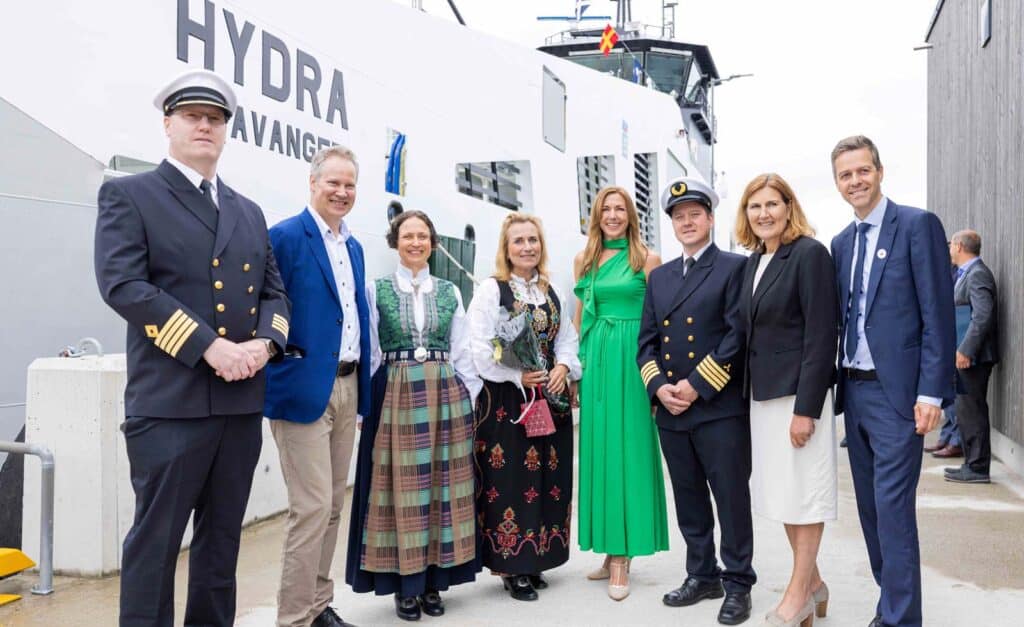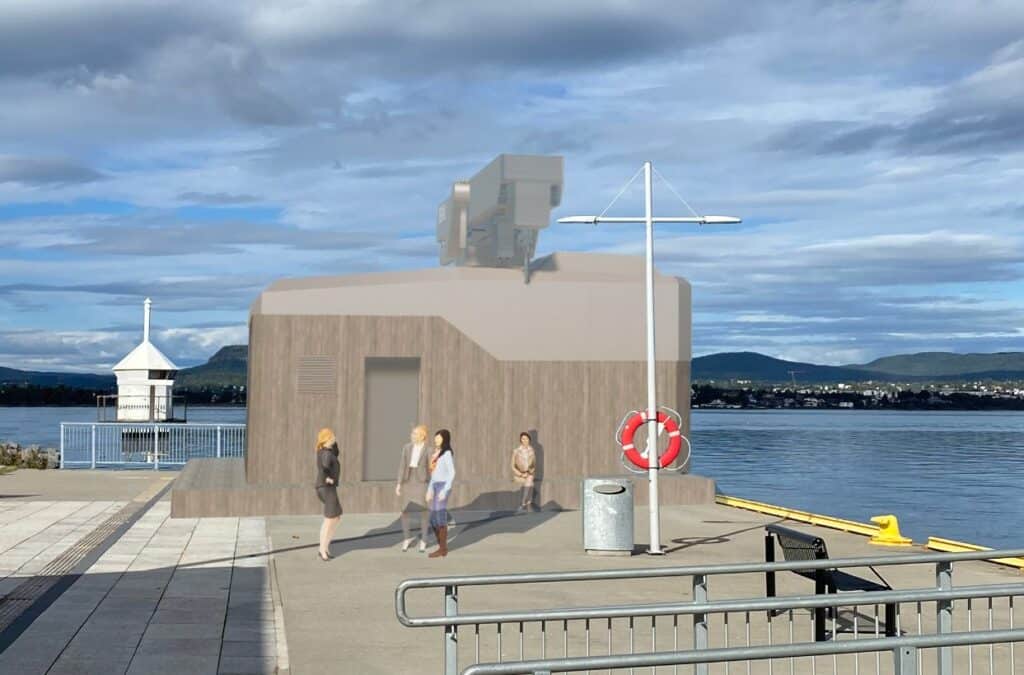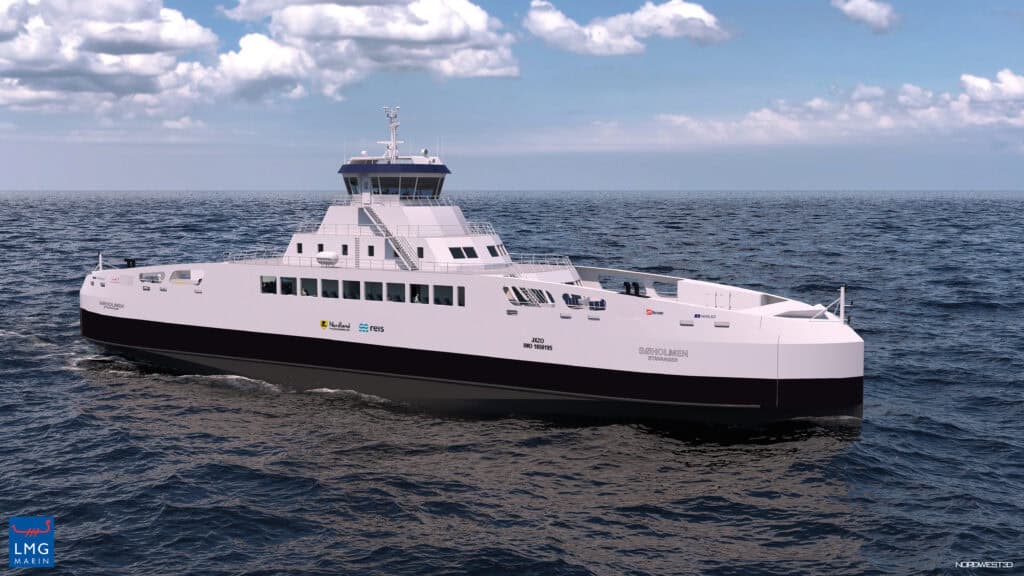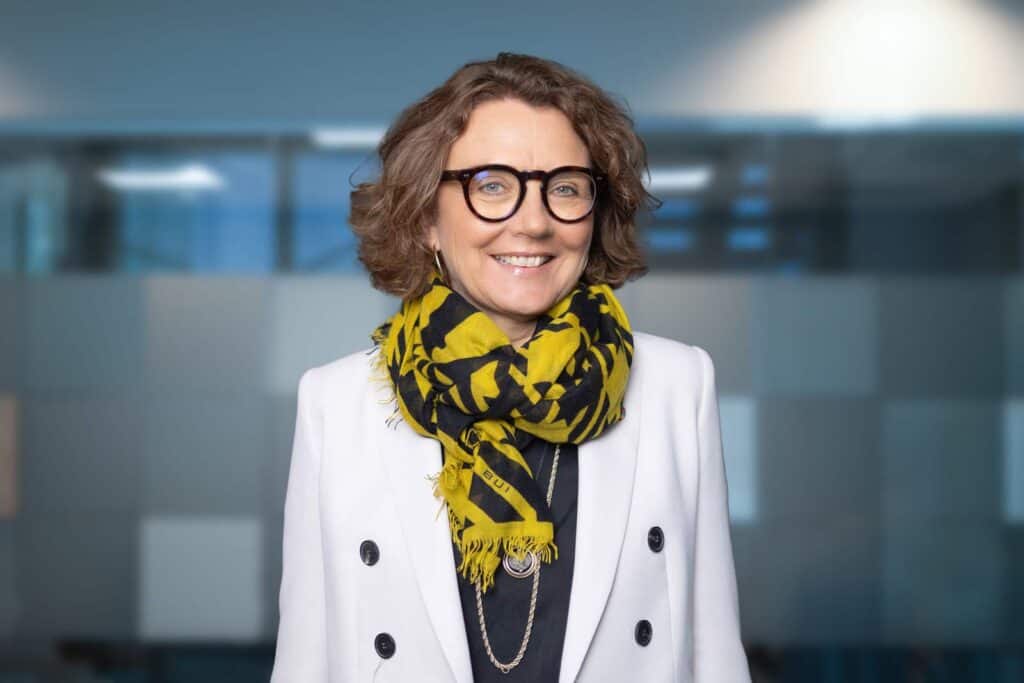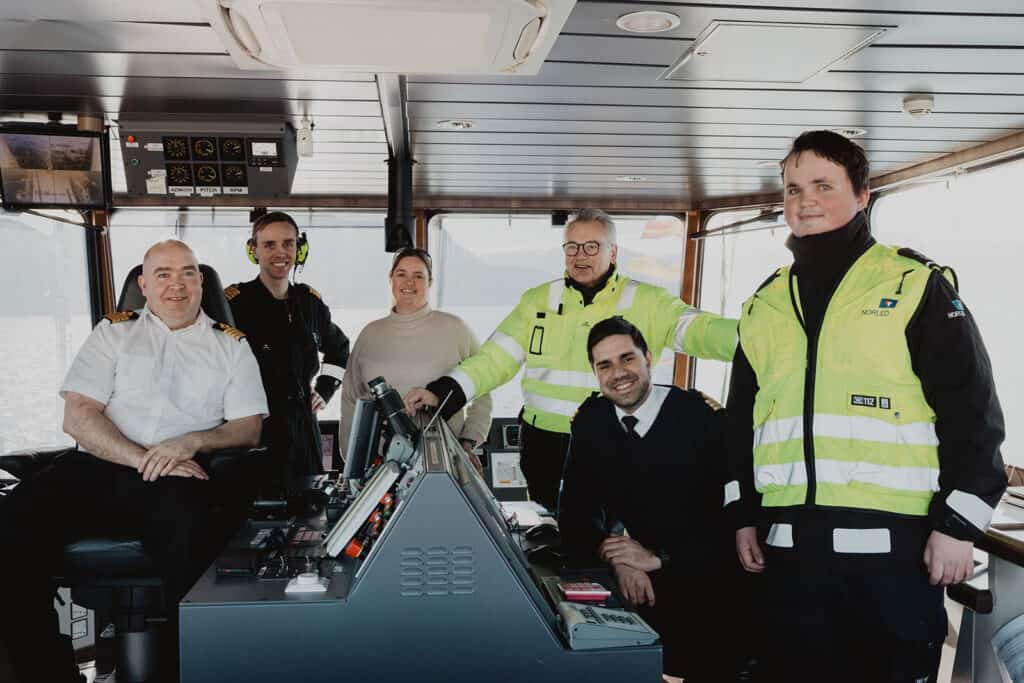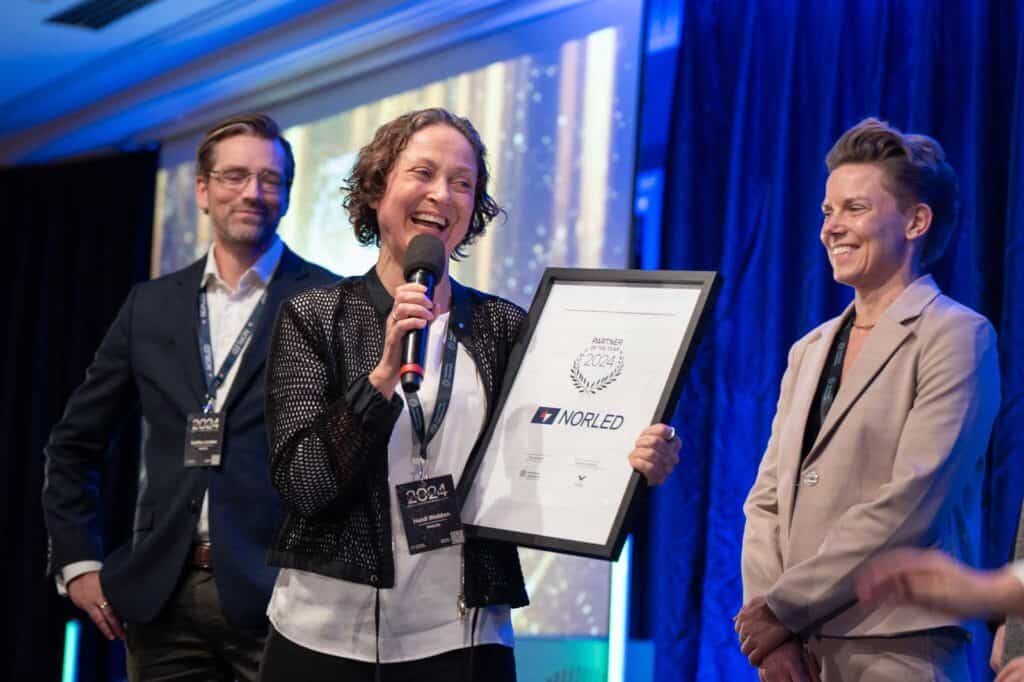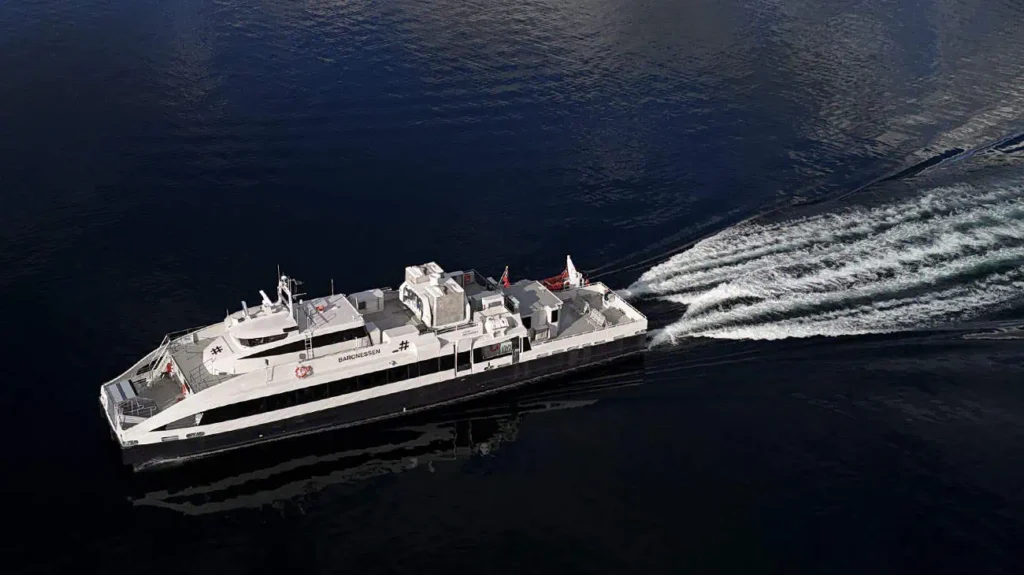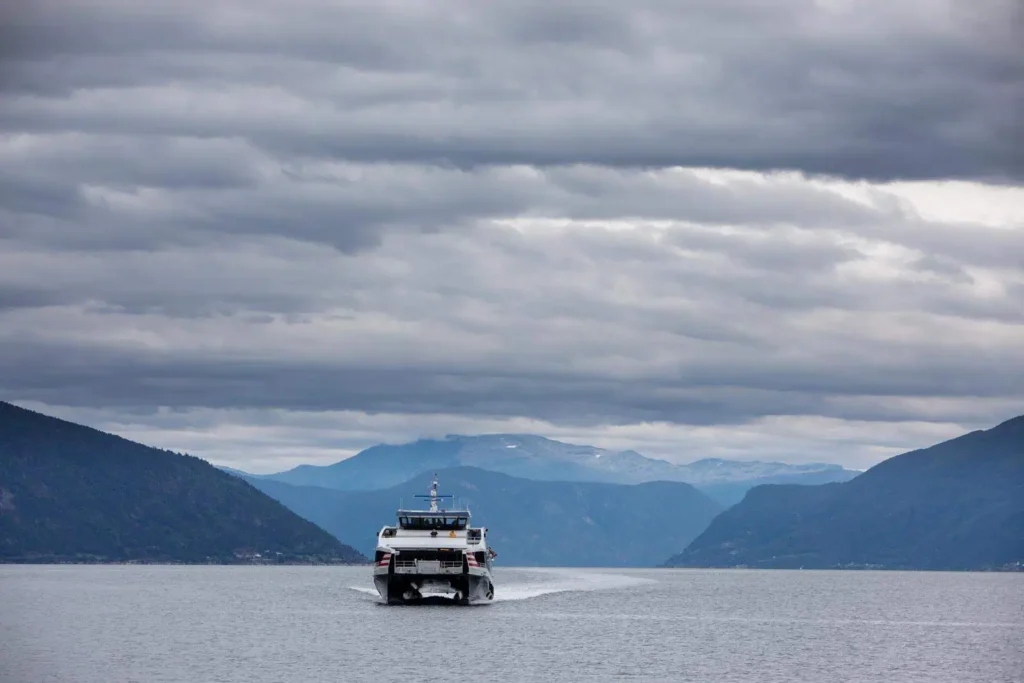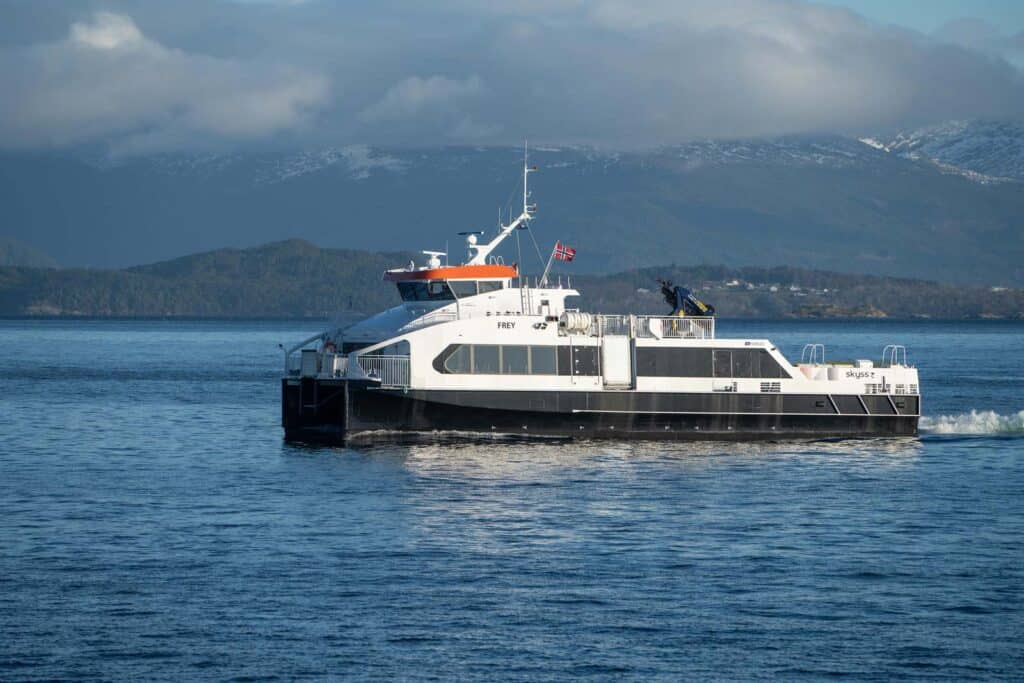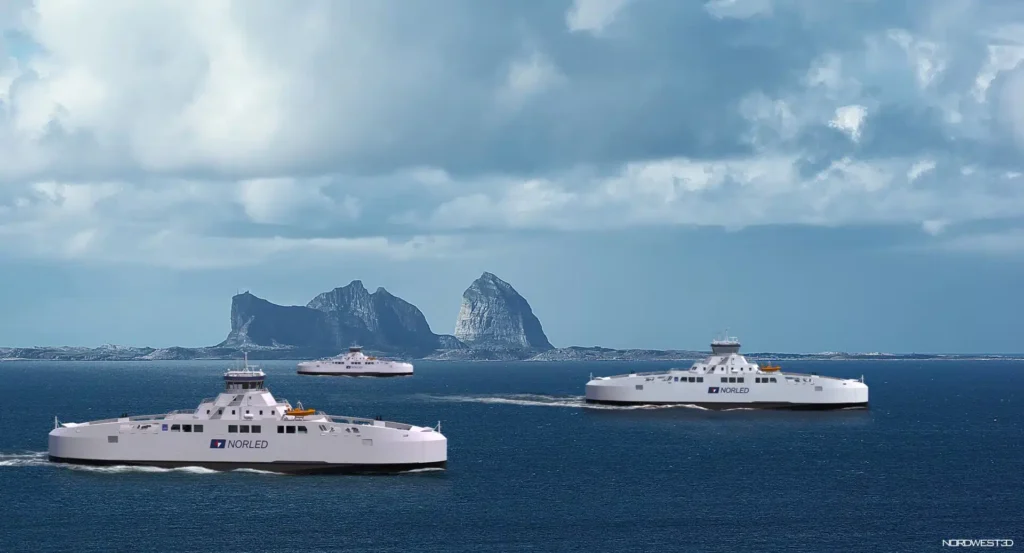The world’s first ship powered by liquid hydrogen impresses
After its first few months in operation, the pioneering vessel MF “Hydra” has proved that liquid hydrogen on ships is both possible and efficient. Experience shows that this is a technology and a fuel that can ensure that short sea shipping in Norway can be emission-free where batteries are not an option. Liquid hydrogen can play an important role in the green maritime transition. The pilot project at Hjelmeland is therefore very important for global shipping.
– The start-up of hydrogen operation on MF “Hydra” has been very successful. It works incredibly well, and we are convinced that liquid hydrogen on ships is a solution that can be used in Norway and the rest of the world,” says Heidi Wolden, CEO of Norled.
MF “Hydra” is the start of a new era in Norwegian shipping. A world-leading green transition has been introduced, while at the same time ensuring that passenger services have been delivered as planned.
– The Norwegian Public Roads Administration is incredibly proud to contribute to public procurement becoming an important tool for developing and implementing new technology. “It’s important for us to use our purchasing power for the green transition. Our experience with the world’s first hydrogen ferry, MF Hydra, shows that this is possible,” says Director of Roads Ingrid Dahl Hovland.
The Minister of Transport and Communications attended the christening
On Thursday, June 29, MF “Hydra” was christened at Hjelmeland ferry quay in the presence of the Minister of Transport and Communications, Maritime Director, Road Director and several partners.
– The government has ambitious climate commitments. It is therefore a great pleasure to commission the world’s first hydrogen ferry. This ferry will help to fulfill the government’s promise in the Hurdal Platform to ensure the development of infrastructure for climate-friendly ships,” says Minister of Transport Jon-Ivar Nygård.
Over 20 years of green ferry innovation
Norway is at the forefront of the green shift in maritime transport, and the Norwegian Public Roads Administration is once again showing the way for the combination of new technology and the green shift.
The Norwegian Public Roads Administration has been working on converting ferry operations for over 20 years. In 2000, MF Glutra was the first car ferry in the world to run on liquefied natural gas (LNG). This has lower emissions than traditional diesel operation. 11 years ago, we launched the tender that resulted in the MF Ampere, the world’s first propeller-driven electric ferry.
MF “Hydra” marks a major step towards zero emissions, both for ferries and other industries, in Norway and the rest of the world.
Being able to put the world’s first hydrogen ferry into operation is a good example of the combination of public facilitation and innovation in the industry.
– “The green shift in ferry operations is a result of the Norwegian Public Roads Administration using its purchasing power, while the shipping companies are taking on the challenges,” says Road Director Ingrid Dahl Hovland.
Norled focuses on innovation and sustainable solutions.
In 2015, the shipping company launched the world’s first propeller-driven battery ferry, MF Ampere. This led to an electric ferry revolution in Norway. Today, there are around 70 electric ferries in operation in the country.
– “It’s important for us to be at the forefront when it comes to technology development. Investing in innovation, sustainability and collaboration to develop new solutions is our way of taking social responsibility,” says Heidi Wolden.
When work on MF Hydra began, the technology and regulations from the classification society and the Norwegian Maritime Authority were lacking. This is now in place so that other players in Norway can use the regulations.
